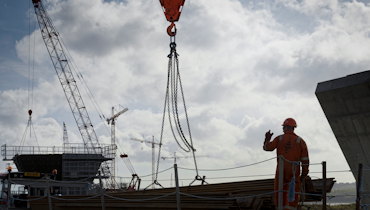Ciara writes:
I was delighted to be invited to an immigration hackathon to explore labour market needs for employers and employees in a post-Brexit Britain.
The event at the Institute of Government on Thursday 9 August 2018 was hosted by Fragomen Worldwide and the REC. It was attended by a wide range of businesses, agencies, embassies, universities and policy makers.
The purpose was to prepare a document to present to government in September 2018 for considering in the design of new immigration rules.
Introduced by Ian Robinson, partner at Fragomen LLP, the discussion covered a range of areas. These included sponsorship, seasonal labour, low, medium, and high skilled labour, shortage occupations, atypical workers and youth mobility.
The challenge is to create an immigration system that controls net migration, encourages skilled people to come and work in the UK and also reduces the burden on national services.
The various stakeholders had competing priorities for an immigration system. But for me there were three key areas to be considered:
- Employment types – it is essential that immigration is looked at in conjunction with employment status. Agencies engaging on a contract for services, which is an essential element of workforce flexibility, are unable to apply for work visas. A system which allowed for short terms visas up to three years would allow atypical workers to come and work, and offer flexibility for employers to deal with peaks and troughs in project requirements.
- Shortage occupation lists – the construction industry and CITB need to work closely with the government to ensure that the shortages within our industry are reflected on the shortage occupation list. We must make the case that not all shortage occupations are linked to degree-level qualifications. We have an industry shortage of steel fixers and other skilled trades – these are not qualifications that are gained at universities.
- Workers’ Registration Scheme – should a system which reflects the old WRS be considered, to allow European worker to enter the UK and work for a designated period of time? This would allow workers to be tracked and control the overall numbers entering and leaving the UK.
More challenging to recruit
The CIPD labour outlook report for summer 2018 reported a 95% fall in labour supply growth from EU-born workers between Q1 2017 and Q1 2018. This is something that we are seeing within VGC. We have had a 3% fall in EU workers between June 2017 and June 2018. A number of large infrastructure projects are due to finish in Q4 2018, and we expect to see the true impact of Brexit within our workforce then.
The DWP reports unemployment at only 4%. With the reduction in EU workers coming to the UK, it is becoming more challenging to recruit. Our strategy to manage this situation is to focus on retention through training and career growth. We also have targeted CSR programmes to encourage new entrants and returners to the industry.
New immigration rules post Brexit must ensure that the UK remains an attractive place to come and work.
That’s essential to providing the UK with the labour pool it needs to remain flexible, agile and competitive in a global economy.
Read more about VGC’s CSR (corporate social responsibility) programmes.


